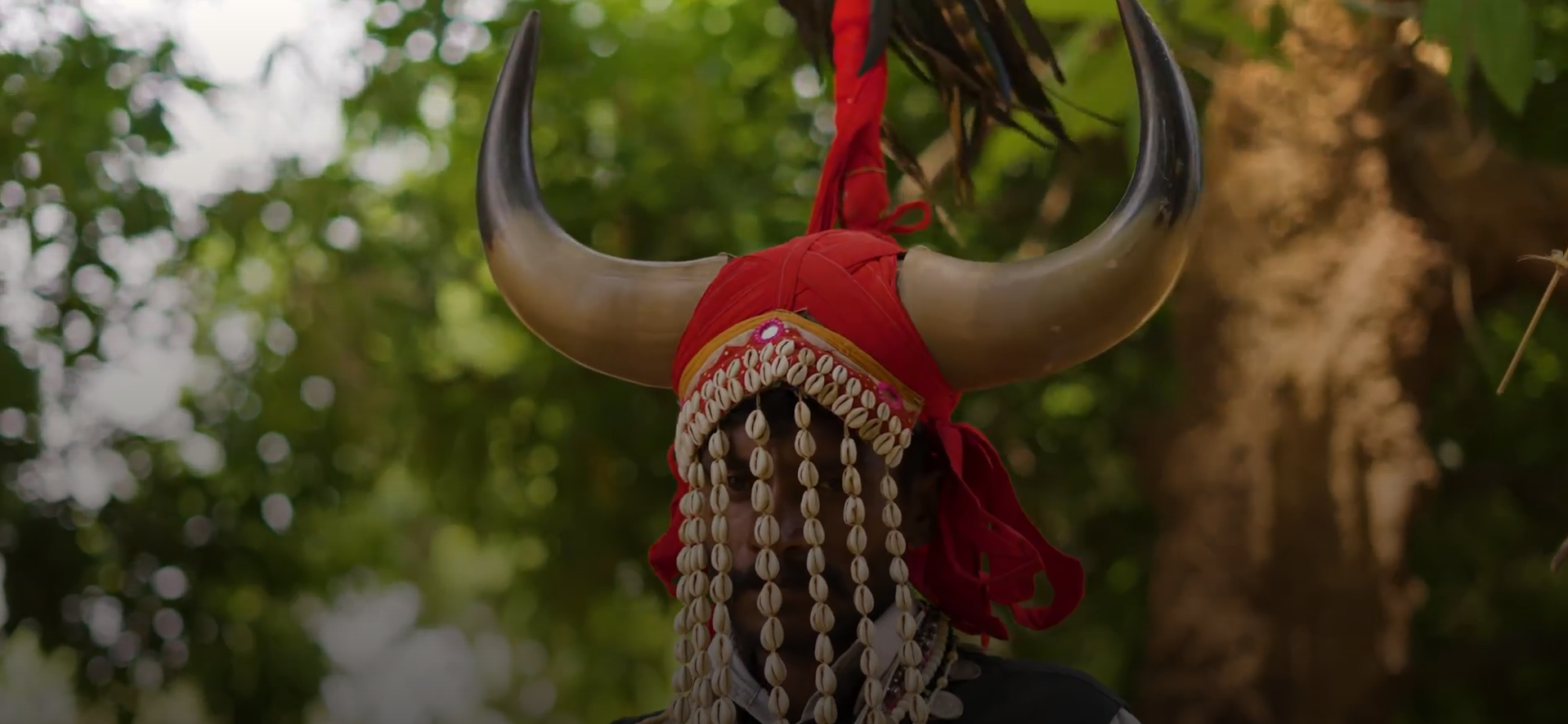tribal dance
Gaur Singh Dance, chhattisgarh
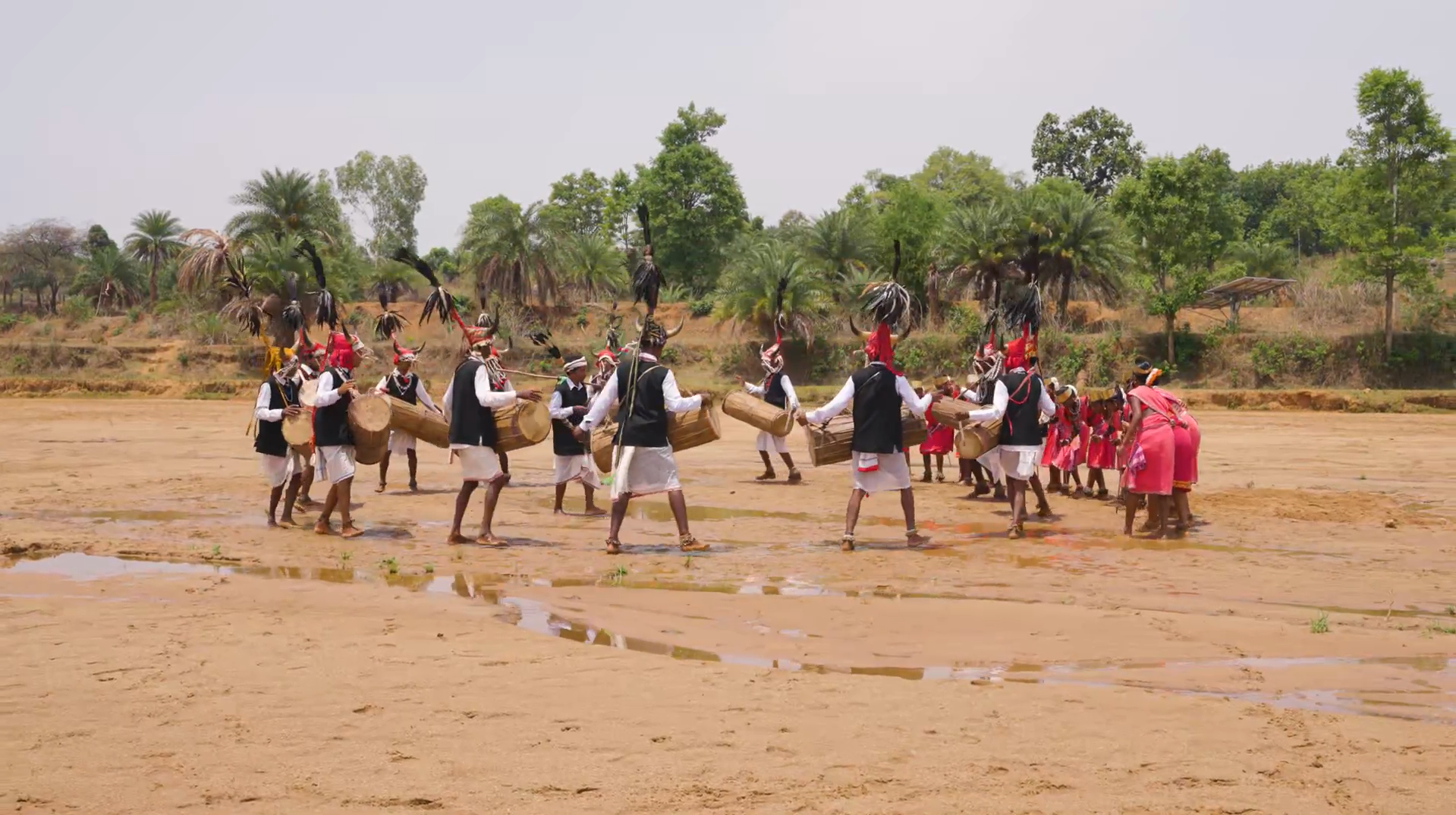
The Gaur Singh Dance is an energetic tribal dance of the Muria tribe in Chhattisgarh's Bastar region. Named after the powerful Indian bison (Gaur), it traditionally depicted hunting rituals, showcasing the strength and agility of both the animal and the hunters. Over time, it has evolved into a vital part of the Muria tribe's cultural heritage, integral to their social gatherings and community celebrations.
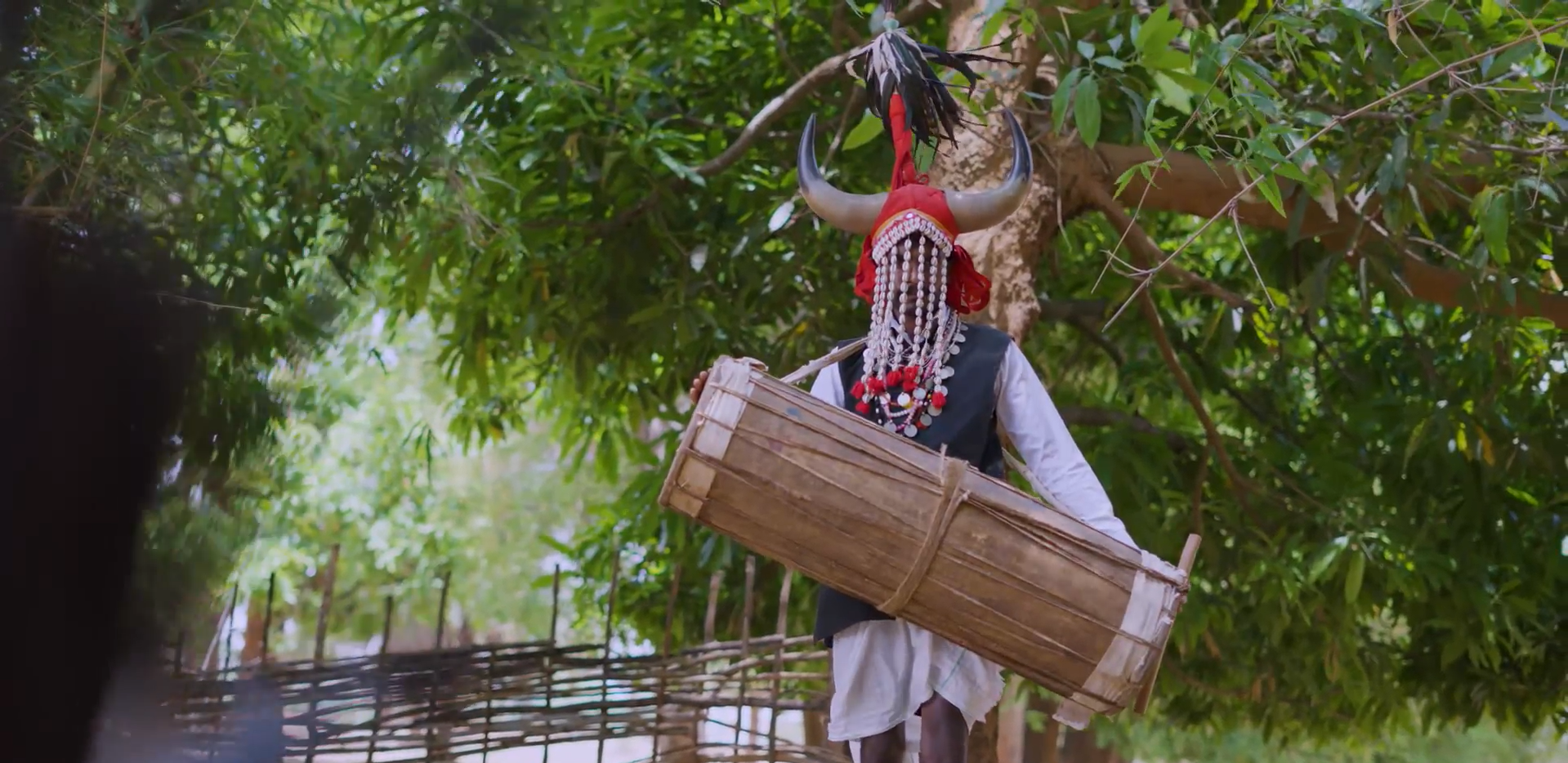
The significance of the Gaur Singh Dance extends beyond mere entertainment. Historically, it served as a ritualistic hunting dance, believed to bring success and protection. It also had a martial aspect, training young men in agility and strength. Today, the dance is a central feature of festivals, weddings, and tribal gatherings, symbolizing unity, prosperity, and the Muria identity. Its energetic movements and synchronized formations, set to traditional music, narrate the primal relationship between humans and the natural world.
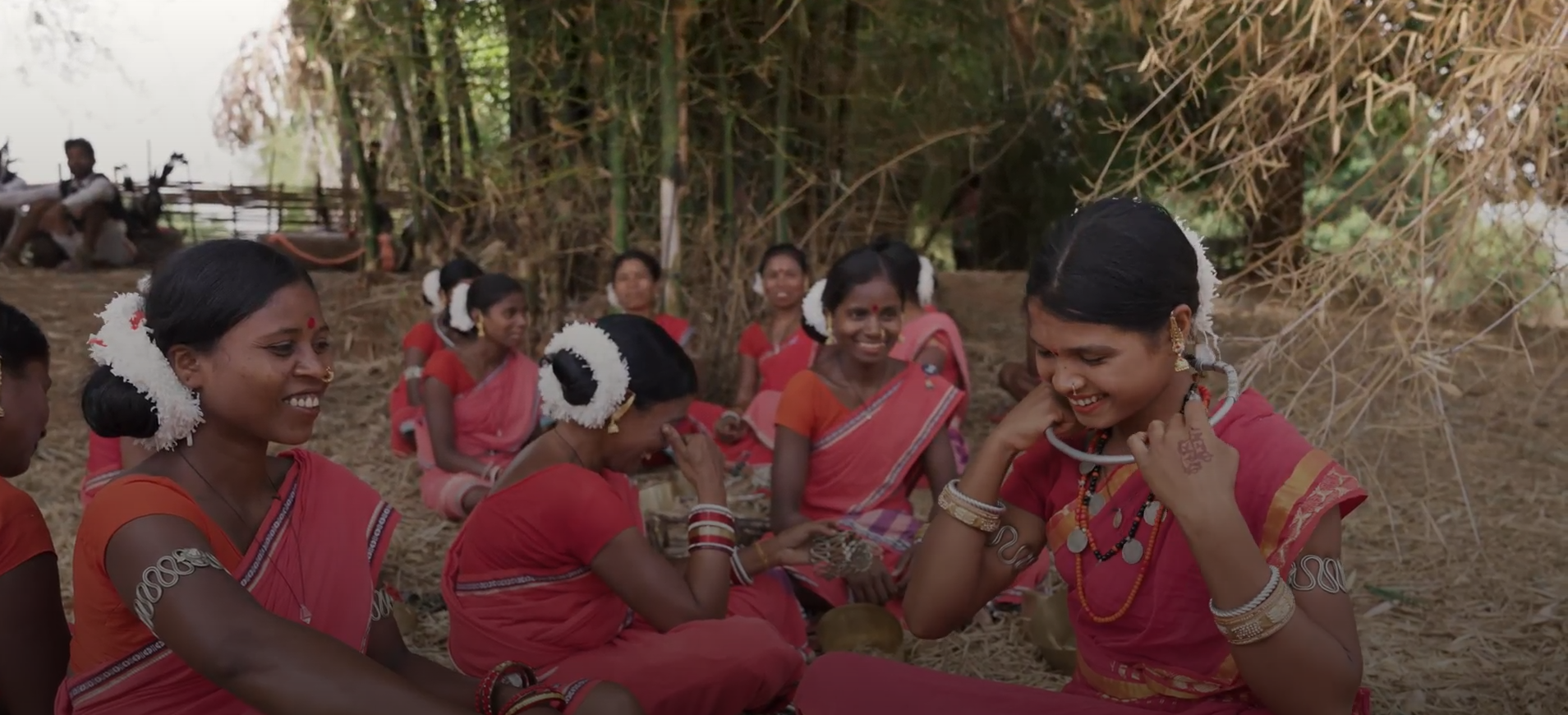
The attire of the Gaur Singh Dance is distinctive and symbolic. Male dancers wear elaborate headgear made of peacock feathers and cowrie shells, representing the bison's horns and tribal wealth. They typically wear minimal clothing, such as a loincloth, for ease of movement. Female dancers also wear minimal attire, often with traditional tattoos signifying social roles and personal achievements. They adorn themselves with brass fillets and bead necklaces, highlighting beauty and social status within the community.
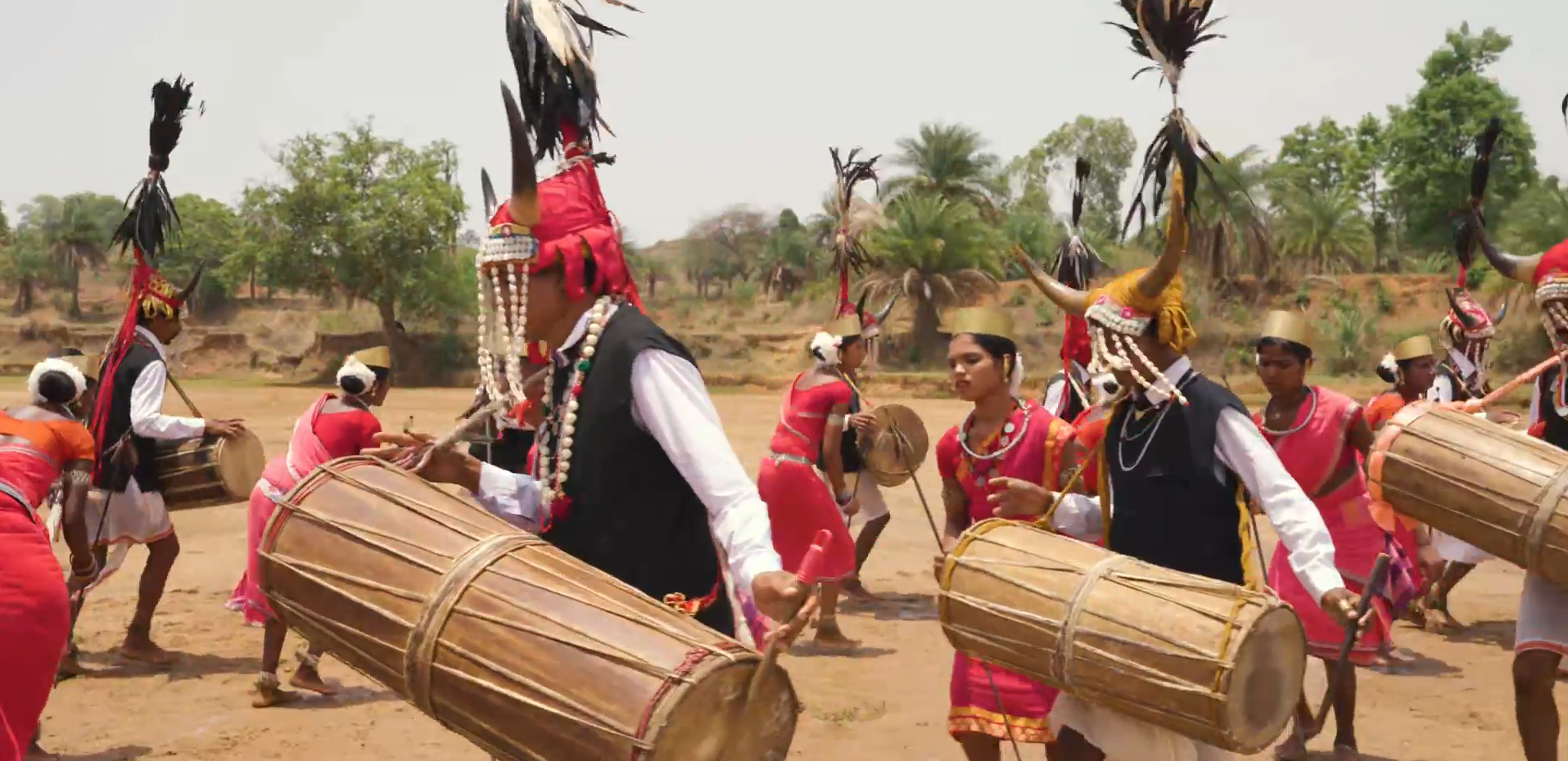
The musical accompaniment for the Gaur Singh Dance is provided by traditional instruments. The Paraiya, a cylindrical drum, sets an auspicious and resonant tone. The Mandar, a hollow wooden drum, lays down the rhythmic foundation. The Dhol, a large drum, adds powerful intensity. The Taal, small cymbals, provide sharp accents, and the flute offers a softer, melodic layer. These instruments collectively energize the dancers and narrate the tribe's heritage through their varying sounds and rhythms.
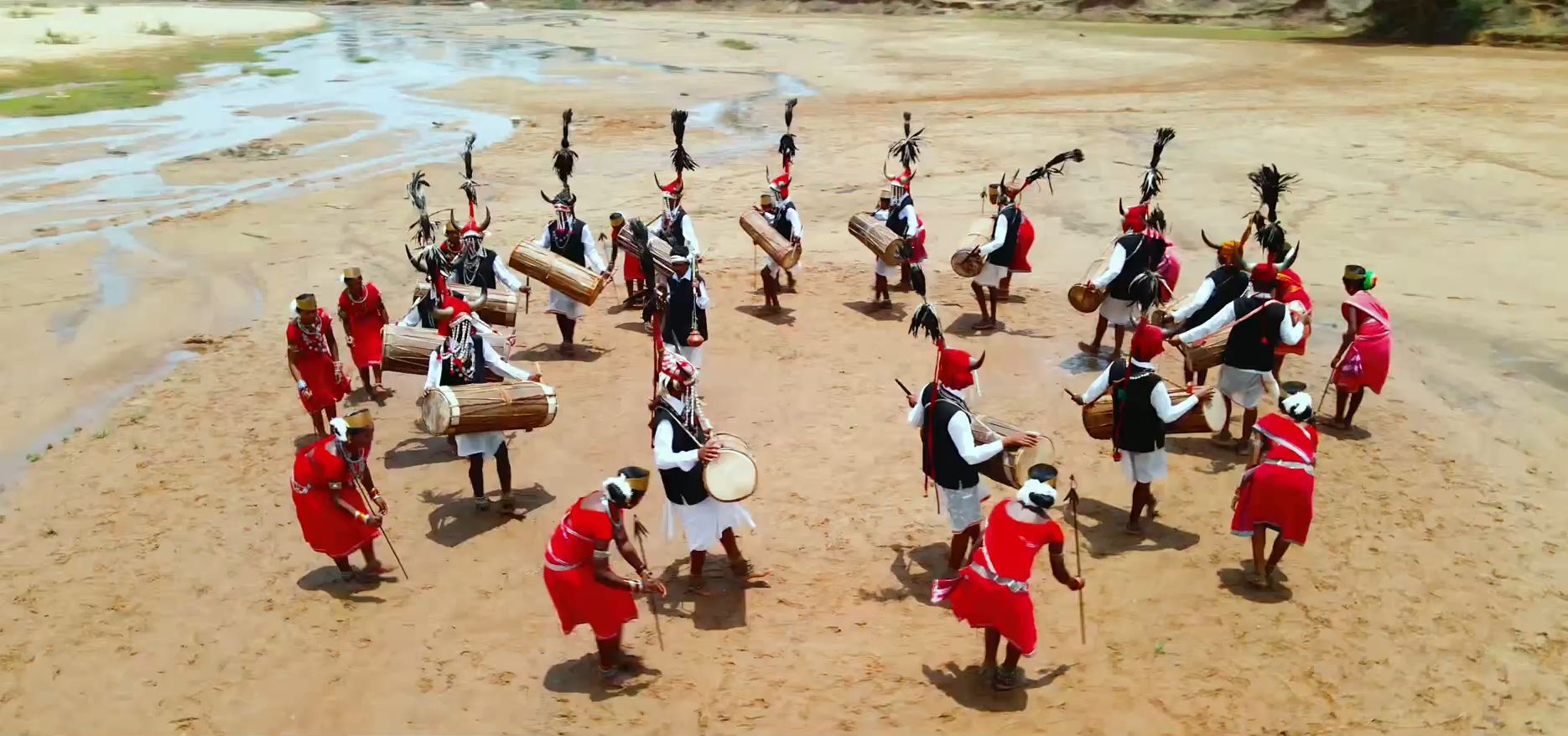
Props play a crucial role in the Gaur Singh Dance. Female dancers wield long, slender sticks called Tirududi, which are rhythmically tapped, symbolizing hunting rituals. Male dancers carry the drums and sometimes flutes, actively incorporating them into their movements. The headgear itself, with its horns and feathers, acts as a primary prop, embodying the spirit of the bison. These props enhance the visual storytelling of the dance, reinforcing the Muria tribe's deep connection to nature, their hunting traditions, and their strong sense of communal identity.
